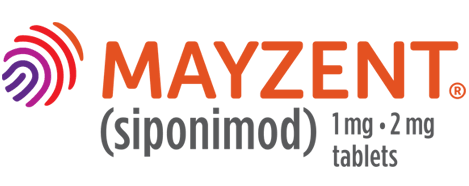RESOURCES TO HELP YOU LEARN MORE ABOUT MAYZENT®
AND GET YOUR PATIENTS STARTED
MAYZENT RESOURCES
For HCPs and Office Staff

Onboarding Brochure
This piece explains how to get your patients started on MAYZENT in just 2 steps—assessments and initiation.
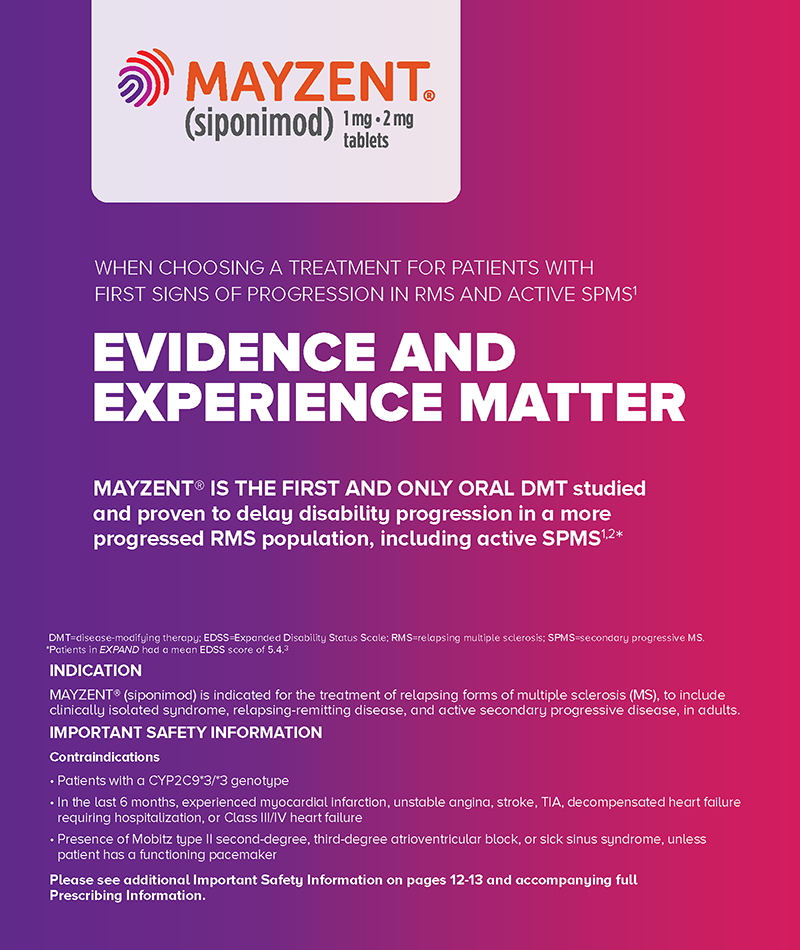
Choose MAYZENT Brochure
This brochure details the proven experience of MAYZENT in patients with progressing RMS and encourages choosing MAYZENT earlier to stay ahead of progression.
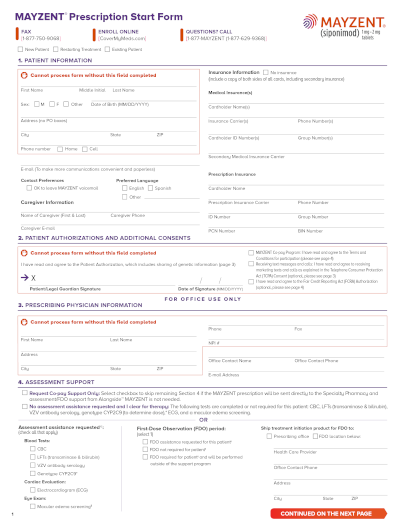
Start Form
Submitting the Start Form automatically enrolls patients in AlongsideTM MAYZENT, and helps them get started on treatment.
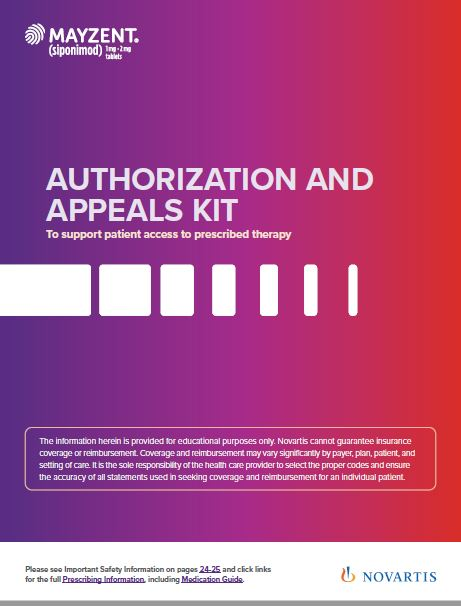
Authorization & Appeals Kit
This tool kit explains how to navigate the insurance coverage process; it includes sample letters and checklists to help you ensure a complete submission.
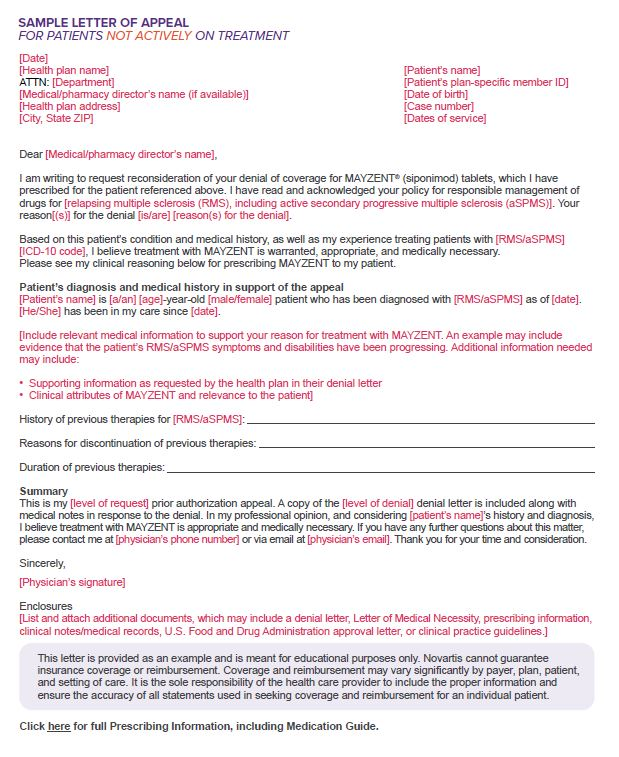
Sample Appeal Letter
If a patient is denied coverage, you may be required to explain the clinical rationale for prescribing MAYZENT. This letter addresses each specific reason given for the denial.
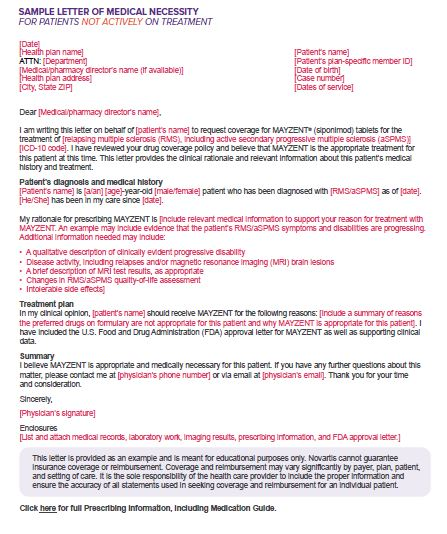
Sample Medical Necessity Letter
You may need to prepare this letter to document the medical need for MAYZENT based on the patient’s specific medical history and diagnosis.
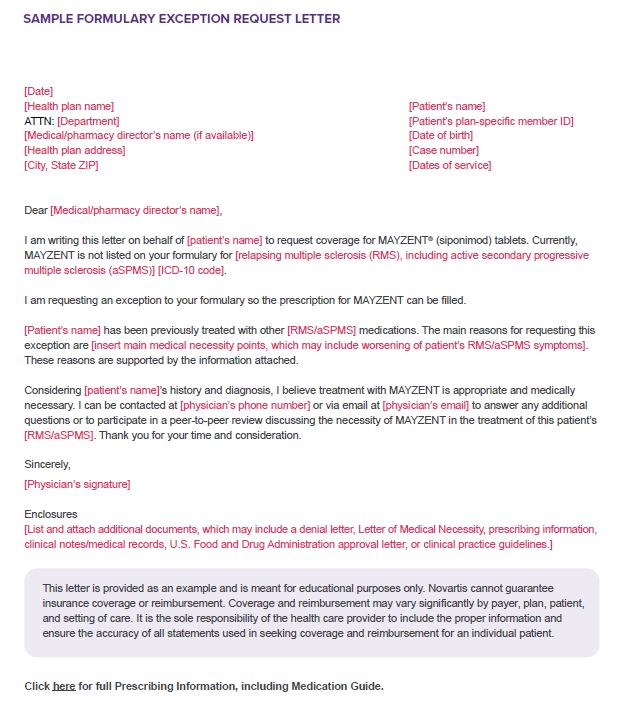
Sample Formulary Exception Request Letter
For health plans that list MAYZENT as nonformulary or not covered/NDC block, you may be asked to submit a letter like this, depending on the health plan’s requirements.
For Patients
For Patients

Patient Brochure
This brochure can answer your patients’ questions about MAYZENT—from getting started to information about efficacy and side effects.

Getting Started on Treatment Brochure
A step-by-step guide to titration, storage and handling, and how to get support through Alongside MAYZENT.
FOR PATIENTS
For patient-friendly links and easy-to-download materials on MS and MAYZENT, patients can
visit the resources page on mayzent.com.
FOR PATIENTS
For patient-friendly links and easy-to-download materials on MS and MAYZENT, patients can visit the resources page on mayzent.com.
TELEMEDICINE RESOURCES
Tips and Tools
If you are seeing patients remotely, below are some helpful resources for both you and your patients.
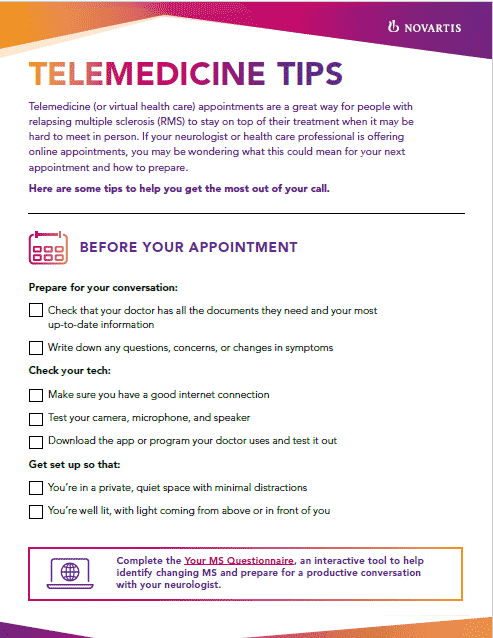
For Patients: Digital Checklist
A downloadable aid to help patients have a more engaging virtual visit, along with some technical tips.
GET PATIENTS STARTED ON MAYZENT®
HCP, health care professional; MOA, mechanism of action; MOD, mechanism of disease; MS, multiple sclerosis; RMS, relapsing MS.
